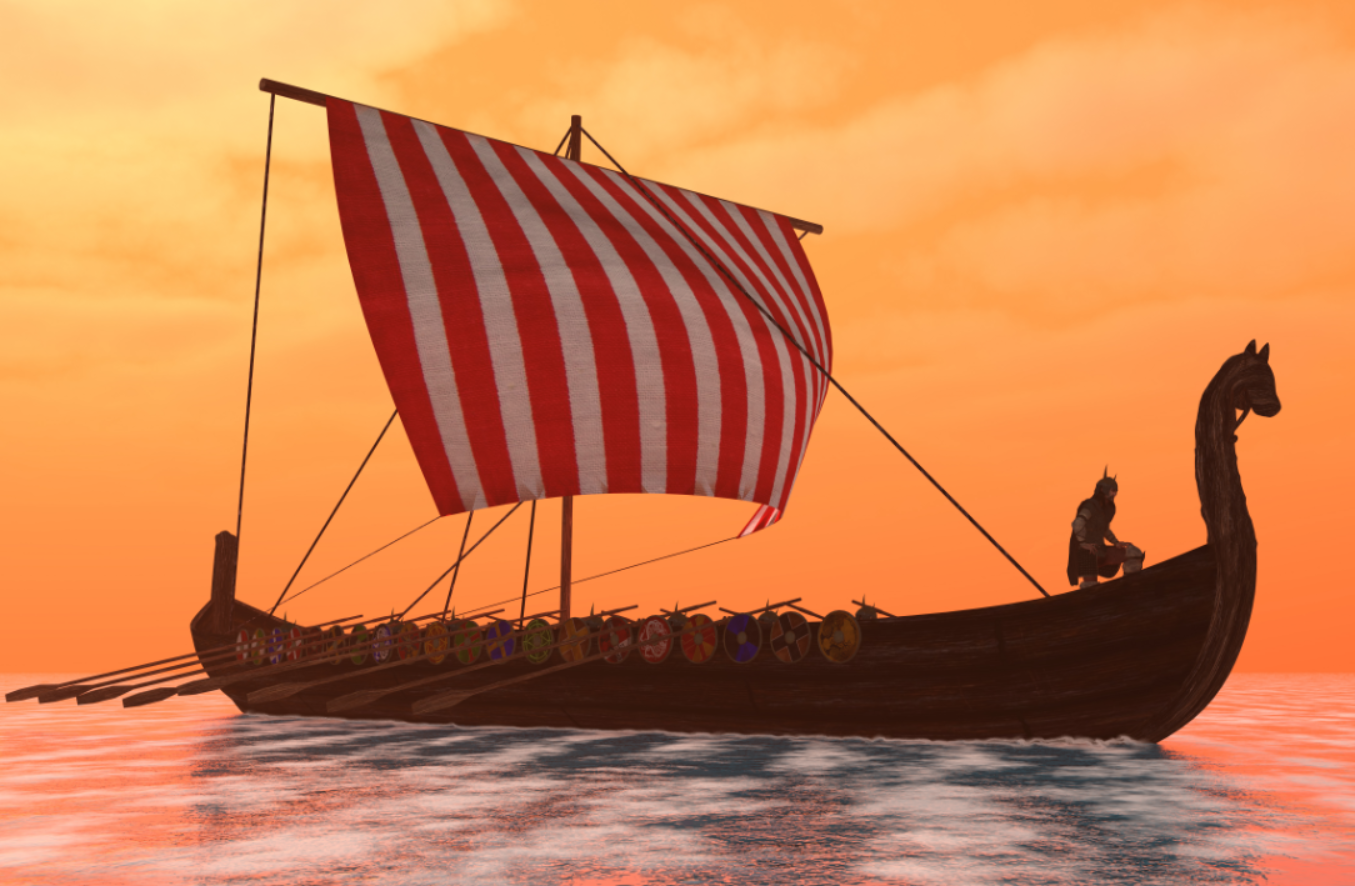- UNITS
- Unit 3 - The Viking Expansion
- The Game of Words
- Prof. Xue and Luk's Conversation
- An Active Reader
- Asking Questions
- Language Knots
- Test Corner
- LEARNING

♦ This introductory exercise aims to give you a feel for the sound and rhythm of the language, whilst presenting an overview of the maritime topic at hand. ♦ By reading and then listening to the accompanying audio, you’ll discover how words are pronounced and some simple sentence structures. ♦ Once you are comfortable with how the written and spoken words are connected, you’ll be ready to focus on keywords in the next exercise.
The Viking Expansion
So far, we have followed the seafaring peoples around the Mediterranean and the Near East. Now we look to Northern Europe: to Scandinavia and the Vikings.
The Vikings were peoples from Denmark, Sweden and Norway. We think of the Vikings as very aggressive and warlike, but mostly they were farmers, traders and craftsmen.
As their population grew, their people did not have enough good land. They had to spread out and find new lands to settle on. At first, they settled new lands, but then they began to attack and dominate existing populations. Here begins the image of the fierce Viking raider.
More than in other places, the geography of their land made them into boat-builders. Mountains and marshes made land travel very difficult, but in boats they travelled along the many rivers, fjords and coastlines. Therefore, the Vikings first built canoes. Then, they borrowed technologies from the Romans, like using oars, iron nails, and keel design. With these learnings, they built the first longship, or dragonship.
These longboats were not big warships to use in battles at sea, they were designed for raids. In raids, ships would carry 20-100 Vikings, they would find a country’s coast, travel up the rivers, and attack the people there taking their gold and resources. Sometimes the Vikings even carried their ships across land between rivers, this meant they could go further inland. Early Viking ships were light, fast and strong. They were very maneuverable, as they didn’t use sails only oars.
The Vikings were slow to use sails, they only started around 600 BC. Over the next few hundred years, they developed a new type of boat called a knarr. These knarrs had wider and deeper hulls, a strong central keel and a permanent mast for sailing. They were better for use on the open ocean. On these knarrs, the Vikings travelled across the Northern Atlantic, down to Northern Africa, and into the Mediterranean. This is known as the Viking expansion.
Longer journeys needed good navigation. Viking navigation was done with simple equipment and a deep understanding of the sea and the sky. The Vikings had no compasses or sextants. Experienced sailors would know which stars were directly above their heads at different latitudes.
The Vikings were really the first great Northern European explorers. Their ship design and their geographic knowledge both developed through the second half of the first Millennium AD. There is a large debate about why the Viking expansion happened. Some think it is because Vikings had many wives, and so men had to travel further to find women. Others think it is because trade routes decreased after the fall of Rome, or because southern lands were more fertile and richer than freezing Scandinavia. Either way, the Vikings and their ships are now famous around the world and they went further from shore than any before them.
